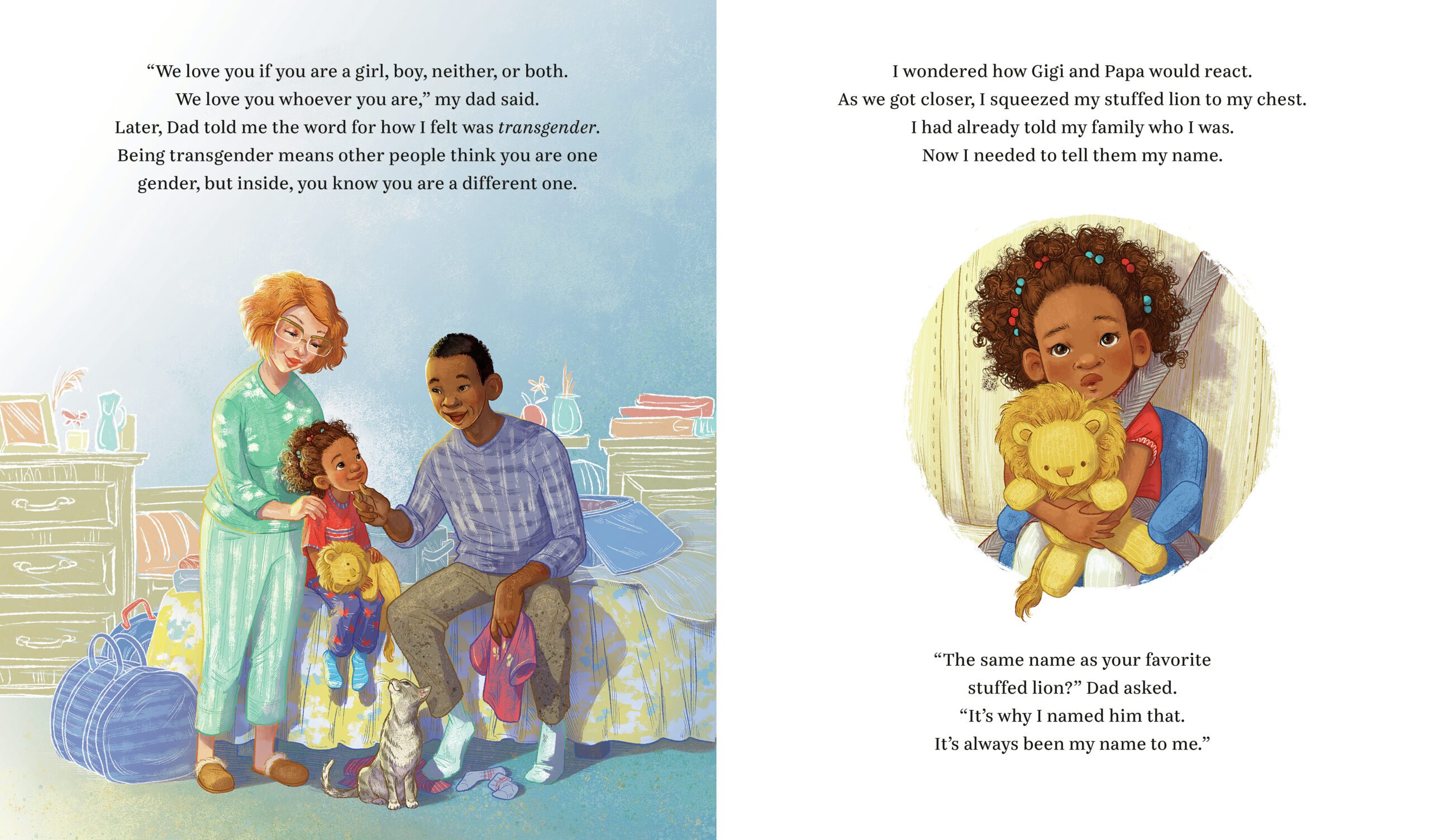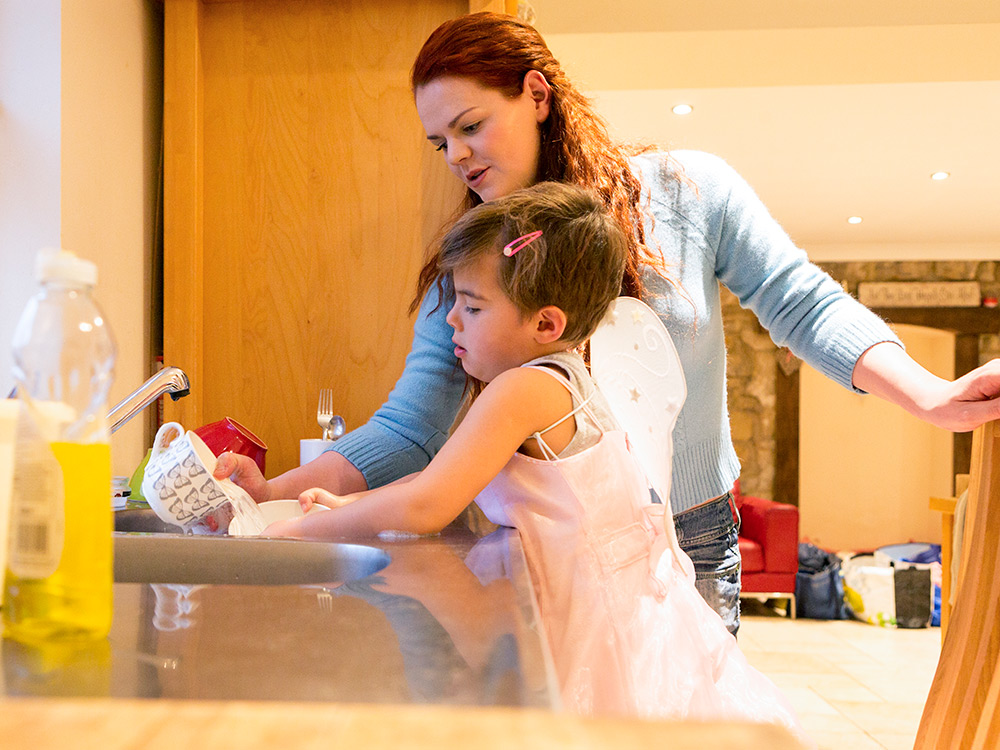My Daughter Wants to Be a Boy: Embracing Transgender Identity

My daughter wants to be a boy; she is experiencing gender dysphoria. Gender dysphoria is when an individual’s gender identity differs from their assigned sex at birth.
It is important to support our children as they navigate their identity and seek professional help if needed. We will explore the ways to understand and engage with a child who expresses a desire to change their gender. We will discuss how to provide a safe and accepting environment, educate ourselves, and respect their chosen identity.
It is essential to approach this topic with empathy and sensitivity to ensure our children feel loved and supported throughout their journey of self-discovery.
Exploring The Complexity Of Gender Identity In Children
Gender identity in children is a complex topic that requires understanding and empathy. The development of gender identity starts at an early age, and it is crucial to have conversations about it. It is not uncommon for a child to express a preferred gender different from their assigned sex at birth.
As parents, it is vital to create a safe and supportive environment where they can explore their identity. By listening to their feelings and experiences without judgment, we can help them navigate this journey. Having open discussions with healthcare professionals can also provide guidance on the best ways to support our children.
Ultimately, it is important to remember that every child is unique, and their self-identification should be respected and validated.
Recognizing Signs Of Gender Identity Exploration
Recognizing signs of gender identity exploration involves closely observing changes in your child’s behavior and preferences. It is important to understand the difference between gender identity and gender expression. By paying attention to your child’s actions, interests, and the way they express themselves, you may notice patterns or shifts that indicate a potential exploration of their gender identity.
This could include changes in clothing choices, hairstyle preferences, or the names and pronouns they use. As a parent, it is crucial to create a supportive and non-judgmental environment, allowing your child to express themselves authentically. Open communication and seeking professional guidance can also help navigate this journey together, ensuring your child feels loved and accepted for who they truly are.
Navigating The Journey Of A Child’S Gender Transition
It’s a challenging and sensitive journey to navigate when your child expresses a desire to transition genders. Supporting your child’s self-discovery process is of utmost importance. The first step is to build a strong support system that includes understanding family members, friends, and even professionals who specialize in this area.
Educate yourself about gender identity and provide a safe space for your child to openly express their thoughts and feelings. Encourage open and honest conversations, ensuring your child feels loved and accepted unconditionally. Actively listen to their concerns and fears, reassuring them that you are there to support them every step of the way.
Seek out support groups or online communities where you can connect with other families going through a similar experience. Remember, your child’s journey is unique, and it’s crucial to respect their choices and provide ongoing support as they explore their true identity.
Acknowledging And Validating Your Child’S Gender Identity
As parents, it is crucial to acknowledge and validate our child’s gender identity. This includes actively listening to their feelings and experiences. By doing so, we create a safe and accepting environment for them to express themselves authentically. It is not uncommon for children to question or explore their gender identity, and it is our role to support them unconditionally.
Avoid imposing societal norms or expectations onto our children. Instead, focus on understanding and respecting their unique journey. By embracing their true selves, we give our children the freedom to grow and thrive. Let us empower our children by affirming their identity, allowing them to embrace who they truly are.
Coping With Parental Feelings And Concerns
Understanding and processing your emotions when your daughter wants to transition into a boy can be challenging. Accepting your child’s identity is crucial, but it’s also vital to navigate your own feelings. Seek professional guidance and support to cope with any concerns or confusion you may have.
By discussing your emotions with a counselor or therapist, you can gain insight into your reactions and develop healthy coping mechanisms. Remember that your child’s happiness and well-being should be your priority. Be open-minded, educate yourself about gender identity, and embrace the changes alongside your child.
It’s natural to feel a range of emotions, but seeking guidance and support will help you navigate this journey with love, acceptance, and understanding.
Understanding The Process Of Transitioning
Understanding the process of transitioning is crucial when your child tells you that they want to be a boy. Learning about the different steps in a gender transition is essential. Each step can have a significant impact on your child’s well-being.
Supporting them throughout their journey is important for their happiness and growth. Taking the time to educate yourself about the process can help you better understand and empathize with your child’s experiences. It is essential to create a safe and accepting environment where they can freely express themselves.
Remember, transitioning is a unique and personal journey, and your support plays a vital role in their overall well-being. Embrace open communication and be there for them every step of the way, providing love and support unconditionally.
Promoting Positive Mental And Emotional Health
My daughter recently expressed that she wants to identify as a boy. As a parent, my initial reaction was confusion and concern. However, I quickly realized the importance of promoting positive mental and emotional health for my child. Encouraging open communication and self-expression has become a priority in our household.
It is crucial for me to create a safe and supportive environment where my child feels comfortable discussing their feelings and thoughts. Additionally, I have sought out resources for mental health support, including therapy services that specialize in gender identity issues.
By doing so, I hope to provide my child with the necessary tools and guidance to navigate their chosen path with confidence and self-acceptance. Understanding and supporting my child in their journey is paramount to their overall well-being.
Advocating For Your Child’S Rights And Well-Being
Advocating for your child’s rights and well-being means navigating legal and educational systems to ensure inclusivity. It involves promoting acceptance and understanding within your community. With your daughter expressing her desire to be a boy, it is essential to educate yourself on the legal processes and protections available to support her.
By staying informed and connected, you can actively advocate for policies and practices that foster a safe and inclusive environment. Engage with school administrators, teachers, and other parents to encourage open dialogue and awareness. Seek out support groups or organizations that offer resources and guidance in navigating this journey.
Together, we can create a society where all children’s identities are respected and celebrated.
Fostering Relationships With Family And Friends
My daughter, who wants to be a boy, presents an opportunity to foster strong relationships with family and friends. Educating our loved ones about transgender issues is crucial in ensuring that they understand and support our child’s journey. By cultivating a supportive network that embraces and respects our child’s identity, we can provide the love and acceptance they deserve.
Open conversations, sharing resources, and addressing misconceptions will help our loved ones navigate this unfamiliar territory. It is important to approach these discussions with empathy and patience, as it may take time for them to fully comprehend and adjust. As we navigate this journey together, we can create an environment where our child feels safe and loved, surrounded by understanding family and friends.
Celebrating Individuality And Self-Acceptance
My daughter’s desire to identify as a boy is an opportunity for celebrating individuality and self-acceptance. Embracing diversity and promoting inclusivity should be our focus as parents and society as a whole. Instead of trying to fit our children into predetermined gender roles, we should encourage self-love and acceptance in all children, regardless of their gender identity.
By supporting their exploration and providing a safe and understanding environment, we can help them navigate their own unique path. Letting go of societal expectations and embracing their true selves will empower them to live authentically and confidently. This journey is about their happiness and well-being, and it’s our responsibility to guide, support, and love them unconditionally.
In doing so, we contribute to building a more accepting and inclusive world for all.

Credit: raisingchildren.net.au
Frequently Asked Questions For My Daughter Wants To Be A Boy
Q: How Can I Support My Daughter If She Wants To Be A Boy?
A: Supporting your child’s gender identity is crucial. Educate yourself on transgender issues, communicate openly with your child, seek professional guidance from a therapist experienced in gender identity, and connect with support groups for both you and your child.
Q: What Is Gender Dysphoria?
A: Gender dysphoria is a condition where a person’s gender identity differs from the sex they were assigned at birth. It can cause significant distress and discomfort. It is important to provide understanding, support, and access to appropriate healthcare for individuals experiencing gender dysphoria.
Q: How Do I Address My Child’S Pronouns If They Want To Be A Boy?
A: Respecting your child’s chosen pronouns is essential. Ask your child which pronouns they prefer, and consistently use those pronouns when referring to them. It may take time to adjust, but using the correct pronouns is a simple way to validate your child’s gender identity.
Conclusion
It’s crucial for parents to support and understand their children’s gender identity. By being open-minded and engaging in conversations, we can create a safe space for our children to express themselves authentically. It’s important to educate ourselves about gender identity and challenge societal norms that may restrict our children’s self-expression.
Encouraging self-acceptance and providing resources like support groups and therapy can be beneficial for both the child and the family. Remember, every child’s journey is unique, and as parents, our role is to provide unwavering love and support. With increased awareness and acceptance, we can foster a more inclusive society where everyone’s individuality is celebrated.
In embracing their journey, we empower our children to become confident, authentic individuals who can thrive as their true selves.









